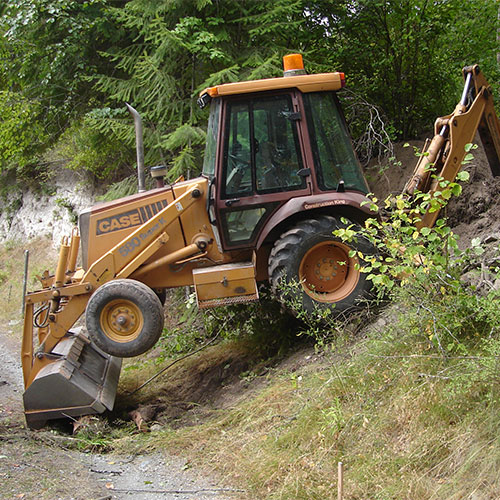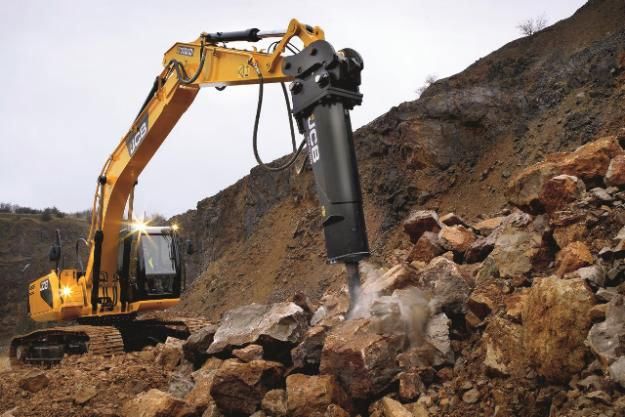Thorough Expedition: The Scientific Research Behind Superior Excavation Practices
The realm of excavation practices is a domain where scientific research links with workmanship to uncover the mysteries hidden below the earth's surface area. From old hand devices to modern-day hydraulic excavators, the advancement of excavation techniques has been a testament to human ingenuity and technical improvements. Nonetheless, what truly sets exceptional excavation methods apart is a deep understanding of geological principles, combined with the use of sophisticated devices and methodologies. By discovering the scientific research behind these techniques, we can reveal the keys that exist under our feet and value the accuracy and experience that go right into every dig.
Development of Excavation Methods
Throughout history, the advancement of excavation strategies has actually played a crucial duty in progressing building practices and historical explorations. From the fundamental devices utilized by our ancestors to the advanced equipment utilized in contemporary times, the progression of excavation approaches has significantly changed just how we come close to different projects.
In old times, hands-on labor with basic tools such as wheelbarrows, pickaxes, and shovels was the primary method of excavation. This labor-intensive process restricted the depth and extent of excavations, typically causing slow development and limited access to particular websites. As people advanced, so did the methods and devices made use of for excavation.
The Industrial Revolution noted a turning factor in excavation practices with the introduction of steam-powered equipment. In contemporary times, modern technology plays an essential duty in excavation, with improvements like GPS systems, drones, and 3D scanning improving accuracy and efficiency in the field.
Function of Modern Technology in Excavation

The integration of cutting-edge innovation has actually essentially reinvented the field of excavation, improving precision and efficiency to unmatched levels. One of the essential technological improvements that has actually significantly influenced excavation techniques is the application of general practitioner systems. These systems allow for accurate mapping of excavation sites, allowing drivers to precisely find below ground energies and structures. In addition, making use of telematics in excavation equipment has actually allowed real-time tracking of machine performance, causing positive upkeep and enhanced functional efficiency.
Additionally, the arrival of 3D modeling and simulation software has structured the preparation process for excavation jobs. Operators and engineers can currently envision the entire excavation process prior to damaging ground, enhancing and recognizing potential difficulties process. Together with this, the application of drones in excavation activities has facilitated aerial surveys, volumetric dimensions, and website examinations with unmatched speed and accuracy.
Geological Principles in Excavation
An understanding of geological concepts is crucial for ensuring the structural stability and stability of excavation sites. Geological aspects play a crucial role in identifying the feasibility and safety of excavation jobs (lancaster excavation). One key geological principle to take into consideration is the sort of dirt or rock existing at the website. Various soil types, such as crushed rock, clay, or sand, have differing degrees of security and need various excavation methods. Natural dirts like clay may require extra assistance to prevent collapses, while sandy soils may be susceptible to erosion throughout excavation.
In addition, the geological framework of the location, consisting of mistakes, fractures, and rock developments, have to be meticulously assessed to recognize possible dangers and challenges. Digging deep into near fault lines or unstable rock developments can lead to instability and possible threats. By performing comprehensive geological studies and analysis, excavators and engineers can create techniques to minimize dangers and make certain the successful completion of excavation jobs. Inevitably, integrating geological concepts into excavation practices is vital for achieving risk-free, reliable, and sustainable outcomes.

Latest Devices for Excavation
In the world of excavation techniques, contemporary technologies in devices have revolutionized the effectiveness and precision of excavation procedures. Among the most up to date devices making waves in the sector is the use of drones outfitted with advanced imaging innovation. These drones can offer thorough airborne surveys of excavation sites, supplying real-time data on topography and possible hazards. This info help in far better preparation and decision-making throughout the excavation procedure.
Another cutting-edge tool getting popularity is the implementation of 3D printing modern technology for producing custom-made excavation equipment. This enables the production of specialized tools that are customized to the particular needs of a job, increasing performance and decreasing downtime.
Additionally, advancements in products science have actually brought about the advancement of more powerful and a lot more durable excavation devices. lancaster trenching. Tungsten carbide-tipped excavator attachments, as an example, offer remarkable efficiency in difficult ground problems, enhancing Bonuses performance on-site
Science's Influence on Excavation Practices

Furthermore, developments in materials science have resulted in the production of stronger, much more long lasting excavation tools and devices. The usage of composite materials in shovels and miners has enhanced their efficiency and durability, eventually boosting efficiency on excavation sites. Additionally, scientific research study on soil auto mechanics and geotechnical engineering has actually offered beneficial understandings right into soil actions, enabling excavation professionals to make educated decisions relating to excavation methods and dirt stablizing techniques. On the whole, science proceeds to drive development and renovation in excavation methods, making excavation tasks a read here lot more efficient, economical, and sustainable.

Verdict
Finally, the evolution of excavation techniques has actually been greatly affected by advancements in technology and a deeper understanding of geological concepts. The current tools and devices used in excavation have enhanced efficiency and accuracy in the area. The application of clinical expertise has actually dramatically improved excavation practices, bring about a lot more lasting and efficient methods for digging deep into different kinds of products.
In the realm of excavation methods, contemporary see here now developments in tools have changed the performance and accuracy of excavation procedures. By leveraging scientific principles, the excavation sector has actually been able to substantially enhance effectiveness, accuracy, and safety in excavation procedures. GPR enables excavation teams to non-invasively check and map subsurface frameworks, utilities, and potential hazards, allowing them to prepare excavation jobs with greater accuracy and minimized danger of accidents.
In addition, clinical research study on soil technicians and geotechnical engineering has offered important insights into soil habits, enabling excavation experts to make informed decisions concerning excavation methods and soil stablizing techniques. Overall, science continues to drive innovation and renovation in excavation methods, making excavation tasks a lot more efficient, cost-efficient, and sustainable.